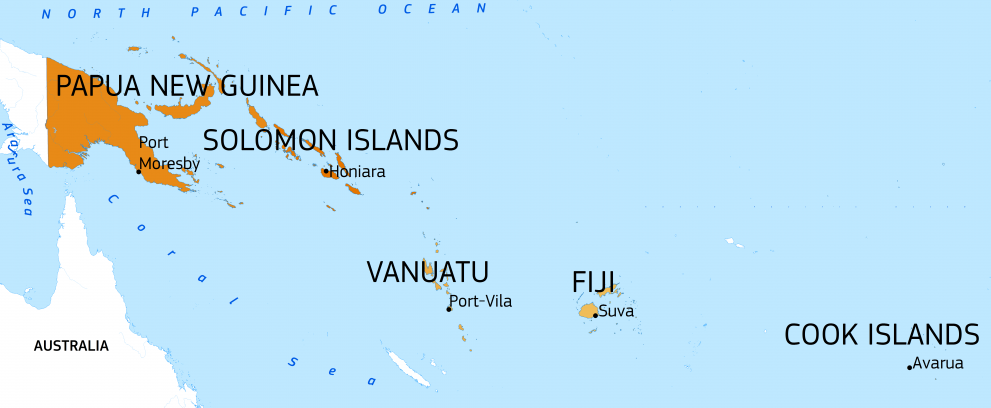Introduction
Natural hazards such as cyclones, floods, droughts, earthquakes, and volcanic eruptions frequently occur in the Pacific region.
The Pacific island countries rank among the world’s most at risk of disasters in terms of casualties and number of impacted people.
Due to climate change, this region is witnessing intense fluctuations in weather patterns, including changing temperature and precipitation, extreme climate events, and rising sea levels.
What are the needs?
The humanitarian situation in the Pacific is heavily affected by recurrent and severe natural hazards, from epidemics to tidal surges to wildfires. These events are intensified by environmental degradation, which further affects local populations and their ability to cope with disasters.
Many Pacific Island countries grapple with gender inequality, lack of economic diversification, and distance from major trade centres. These factors exacerbate their vulnerability to disasters.
With a population of 10 million spread across a vast area, the number of people at risk of natural hazards may appear low in terms of global disaster statistics. However, Pacific countries rank among the highest in casualties and people affected by disaster per number of inhabitants.
El Niño and La Niña are opposite phases of a climate phenomenon in the Pacific Ocean that influence global weather patterns. El Niño is characterized by warmer-than-normal ocean temperatures, often leading to wetter conditions in some regions and droughts in others.
La Niña, the opposite, involves cooler-than-normal ocean temperatures and typically causes drier conditions in certain areas and more rainfall in others. These events can affect weather patterns, including storms, rainfall, and temperatures – not only in the Pacific region but worldwide.

How are we helping?
The EU supports the Pacific region through disaster surveillance, need assessments, and funding. In total, the EU has provided over €21 million in humanitarian assistance to the Pacific region since 2008. Over €12.5 million of this aid supported disaster preparedness programmes. The EU also responded to several disasters.
In 2023, several tropical cyclones struck the Pacific Island nation of Vanuatu. The EU provided €700,000 to support the emergency response on the ground, including clean water and health services, and activated Copernicus to provide satellite mapping. The EU also coordinated with France to send 1 plane, 1 helicopter, and 1 ship via the EU Civil Protection Mechanism for the transport of aid and response teams.
In late 2024, Vanuatu was hit by a devastating earthquake that disrupted vital services and damaged critical infrastructure. The EU allocated a total of €600,000 in humanitarian aid to cover the urgent needs, provided emergency satellite mapping, as well as environmental expertise from Germany and water purification stations, tool kits and solar lamps from France.
Papua New Guinea, the most populous Pacific Island country, was affected by landslides, earthquakes and flooding in 2024. The European Union provided a total of €550,000 for immediate emergency assistance.

EU humanitarian projects have assisted multiple community-based disaster preparedness actions, building cooperation across various levels of society, from village to national. It has also helped with the standardisation of disaster risk reduction tools and logistical coordination. Projects are jointly implemented by public organisations and NGOs.
Last updated: 28/01/2025
Facts & figures
EU humanitarian funding:
Nearly €21 million since 2008
Of this sum, over €12.5 million were dedicated to disaster preparedness programmes

